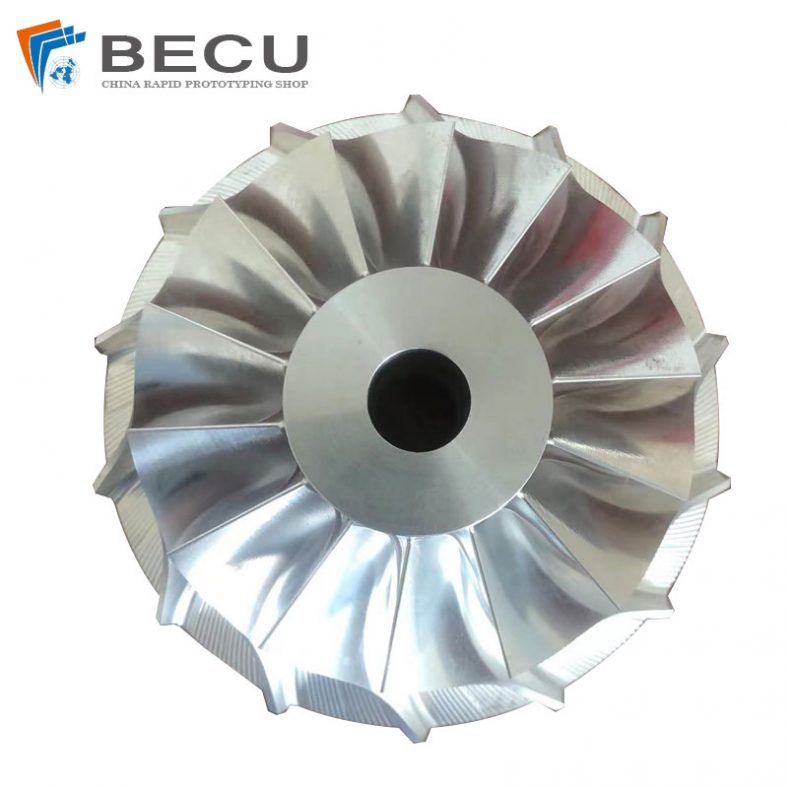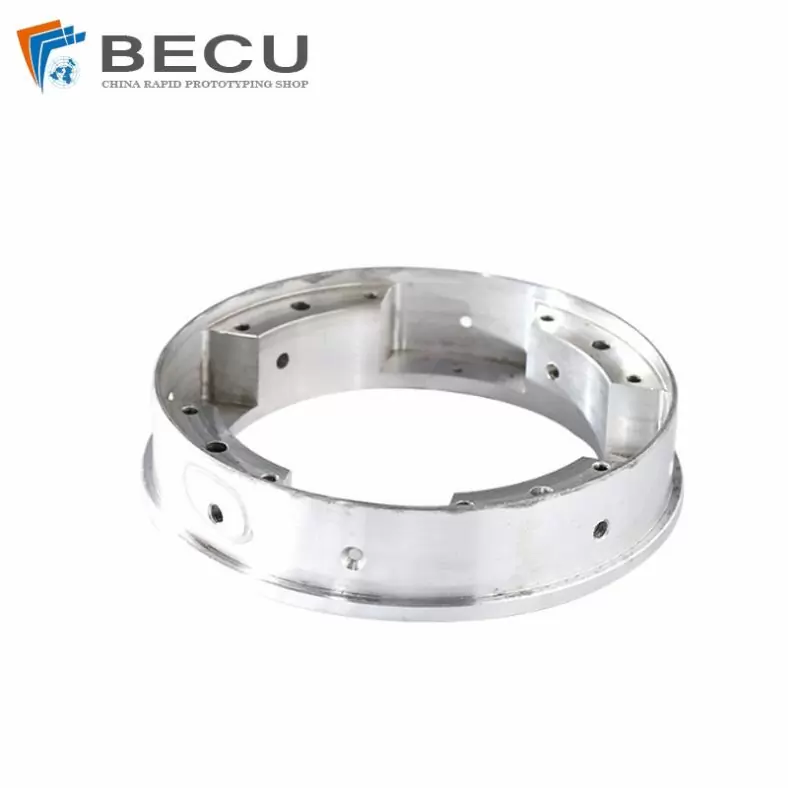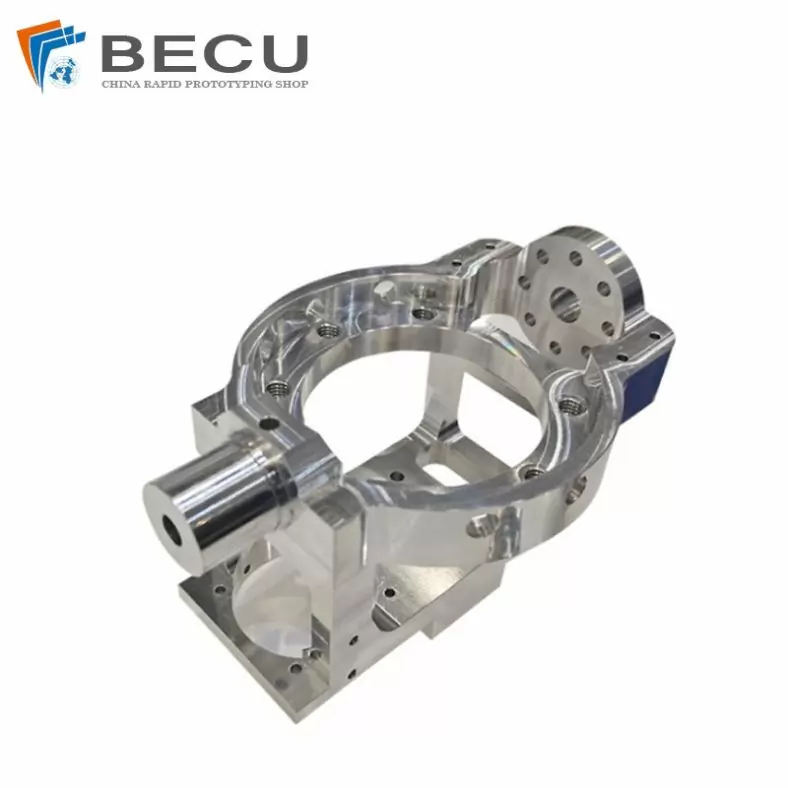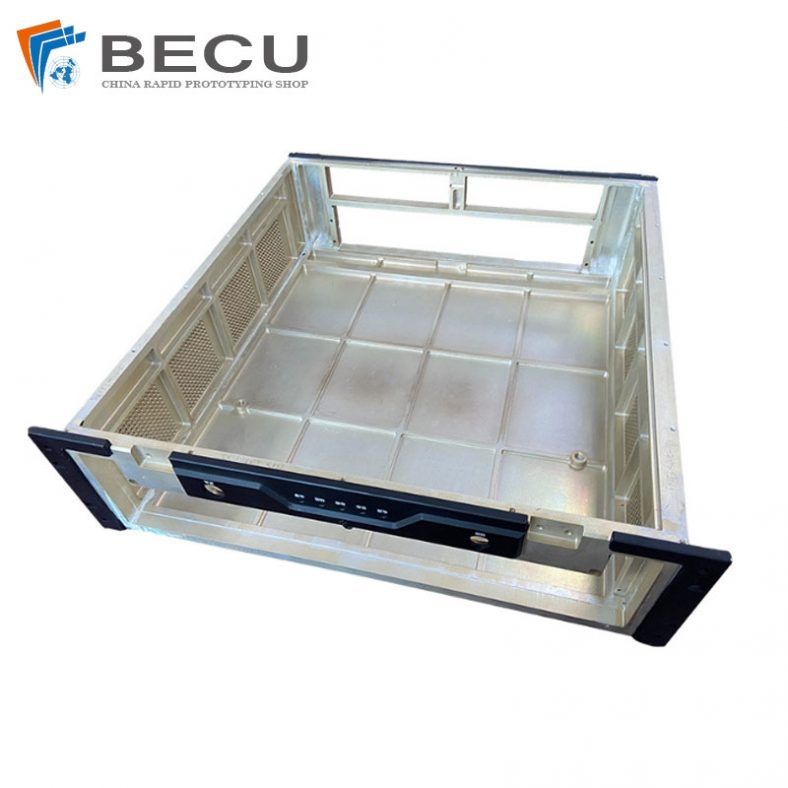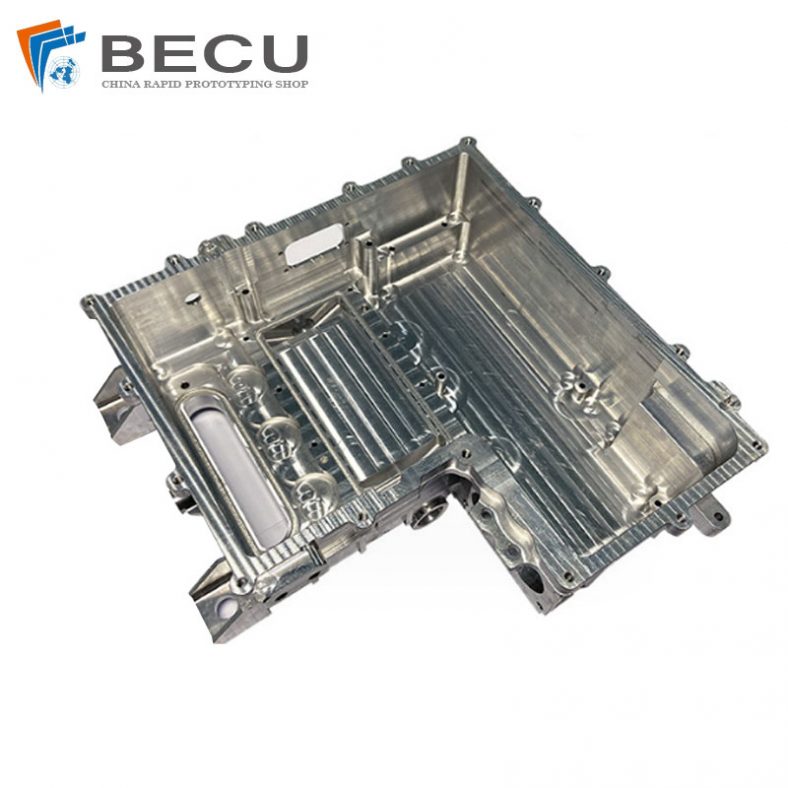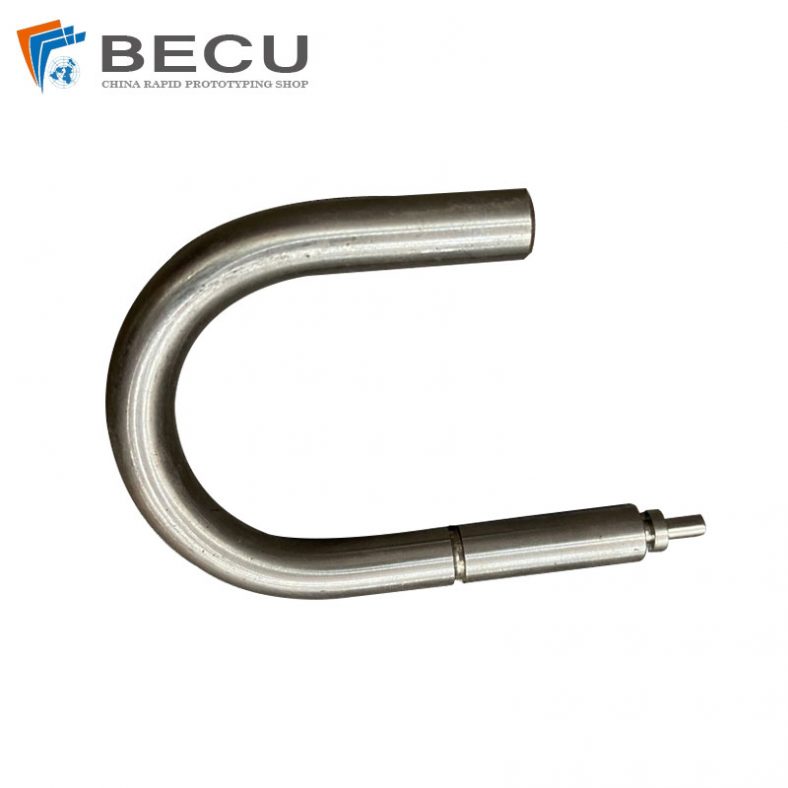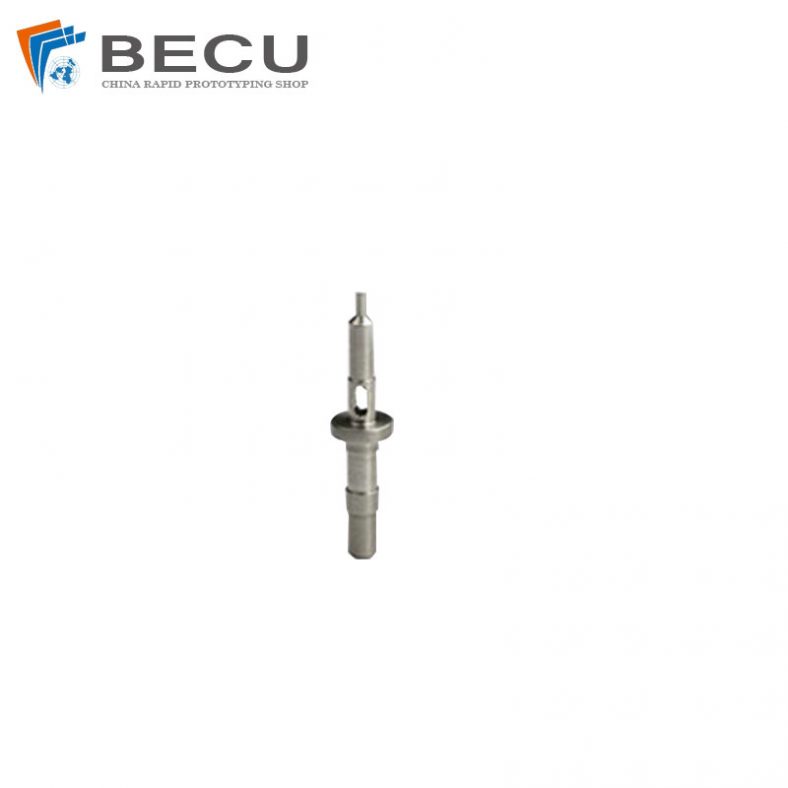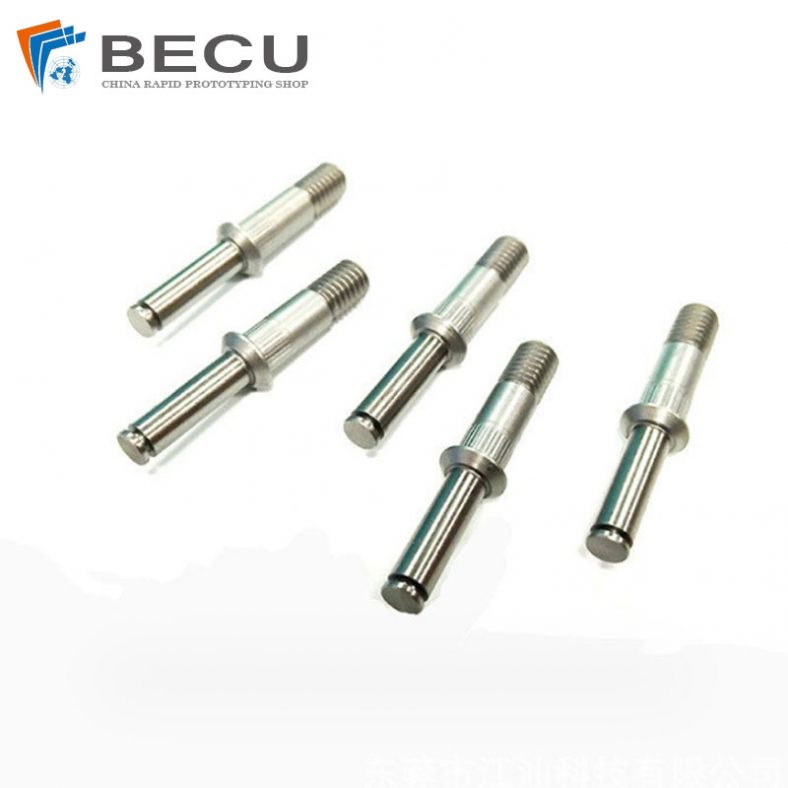In the realm of modern manufacturing, precision, speed, and versatility are paramount. To meet these demands, Computer Numerical Control (CNC) machining centers have revolutionized the industry. Among the various types of CNC machining centers, the horizontal CNC center stands out for its unique capabilities and applications. In this comprehensive guide, we will delve into the intricacies of horizontal CNC centers, exploring their machining range and working principles, and understanding why they are indispensable in today’s manufacturing landscape.
View More Articles:
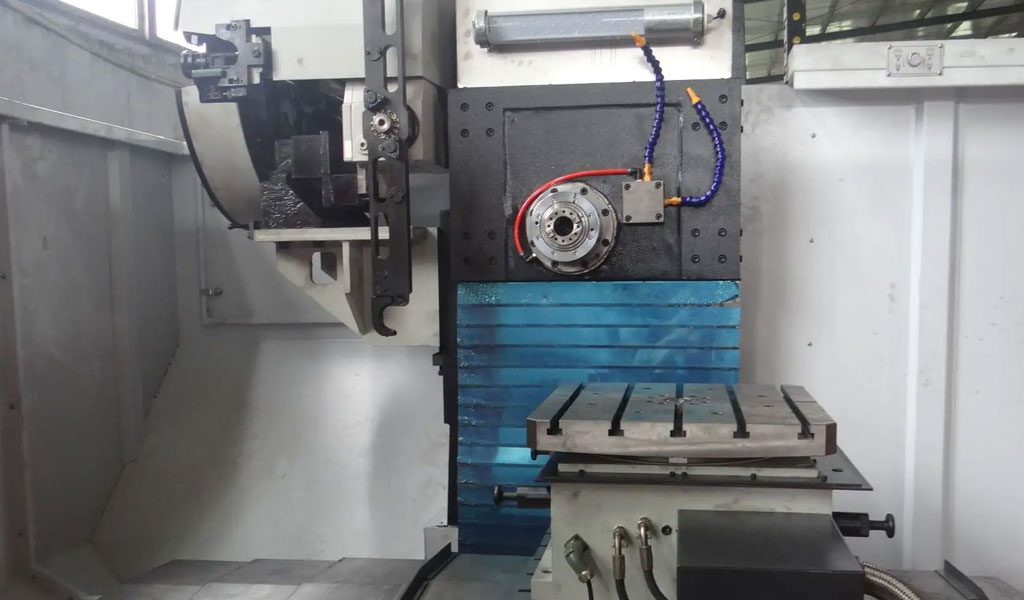
Horizontal CNC Centers: An Overview
Horizontal CNC machining centers, often referred to as horizontal mills or HMCs, are a subset of CNC machines known for their unique spindle orientation and versatile machining capabilities. Horizontal machining center spindle is horizontally oriented, which can perform small angle cutting, especially on the side of the workpiece. This type of machining is suitable for milling grooves or shaping planes.In this section, we will delve into the definition, classification, key components, and various types of horizontal CNC centers.
Definition and Classification
Horizontal CNC machining centers are precision machining machines designed for a wide range of manufacturing tasks. What sets them apart from other CNC machines is their horizontal spindle orientation, where the cutting tool rotates parallel to the workpiece. This orientation offers several advantages, including improved chip evacuation and accessibility to various faces of the workpiece.
Horizontal CNC centers are classified into two main categories:
- Horizontal Machining Centers (HMCs): HMCs are versatile machines equipped with multiple pallets or workstations. This configuration enables them to perform continuous machining operations with minimal setup time. HMCs are well-suited for high-volume production, as they allow for quick workpiece exchange and reduced downtime between machining tasks.
- Horizontal Boring Mills (HBMs): Horizontal boring mills, as the name suggests, are primarily designed for deep drilling and boring operations on large, heavy workpieces. They are known for their robust construction and high rigidity, making them ideal for applications that require precision in heavy-duty machining.
Key Components
Horizontal CNC centers consist of several key components, each playing a crucial role in the machining process:
- Spindle: The spindle is one of the most critical components of a horizontal CNC center. It is responsible for rotating the cutting tool at high speeds, allowing for precise material removal from the workpiece. Spindles come in various types, including geared spindles and direct-drive spindles, each offering specific advantages in terms of speed and torque.
- Tool Magazine: CNC centers are equipped with tool magazines that store a variety of cutting tools. The machine can automatically change tools as needed during the machining process, enhancing efficiency and reducing manual intervention. The capacity of the tool magazine varies between machines, with some HMCs featuring large tool magazines capable of holding dozens of tools.
- Pallets or Workstations: In the case of Horizontal Machining Centers (HMCs), the presence of multiple pallets or workstations is a distinguishing feature. These pallets can hold different workpieces or setups, allowing for concurrent machining operations. The ability to load a new workpiece on one pallet while the machine is machining on another minimizes downtime and maximizes productivity.
- Control Panel: The control panel serves as the interface between the operator and the CNC center. Operators use it to input machining programs, monitor the machine’s status, and make adjustments as necessary. Modern control panels often feature user-friendly graphical interfaces that simplify the programming and operation of the machine.
- Coolant System: A coolant system is essential in horizontal CNC centers to dissipate the heat generated during machining. It also serves to lubricate the cutting tools, extending their lifespan and maintaining machining accuracy. Proper coolant flow and temperature control are crucial for achieving high-quality results.
Types of Horizontal CNC Centers
Horizontal CNC centers come in various configurations to cater to different machining needs and industries. Common types of horizontal CNC centers include:
- 3-Axis HMCs: These machines offer three-axis movement, which includes the X-axis (horizontal movement), the Y-axis (vertical movement), and the Z-axis (depth-wise movement). 3-axis cnc HMCs machine are versatile and suitable for a wide range of general machining tasks, including milling, drilling, and tapping.
- 4-Axis HMCs: In addition to the three primary axes, 4-axis CNC HMCs feature a rotary table, often referred to as the A-axis. This rotary table can rotate the workpiece or the spindle head, allowing for more complex operations such as indexing and contouring. The addition of the fourth axis enhances the machine’s capabilities for machining parts with intricate features.
- 5-Axis HMCs: 5-axis HMCs are at the pinnacle of versatility. In addition to the three linear axes (X, Y, Z) and the rotary A-axis, they incorporate a fifth rotary axis, typically known as the B-axis. This configuration allows the machine to move the workpiece and cutting tool in five axes, enabling machining from multiple angles and orientations. 5-axis HMCs are essential for producing highly complex and contoured parts with unparalleled precision and efficiency.
Each type of horizontal CNC center has its own set of advantages and is chosen based on the specific requirements of the machining project and the industry it serves. Whether it’s a 3-axis HMC for general-purpose machining or a 5-axis HMC for intricate aerospace components, horizontal CNC centers offer a wide range of solutions to meet diverse manufacturing needs.
Machining Range of Horizontal CNC Centers
The machining range of horizontal CNC centers is a crucial factor that determines their suitability for various manufacturing tasks. This section explores the key elements of a horizontal CNC center’s machining range, including the X, Y, and Z axes, rotary axes, and the permissible workpiece size and weight.
X, Y, and Z Axes
Horizontal CNC centers are equipped with primary linear axes, which include:
- X-Axis: The X-axis represents the horizontal movement of the machine’s table or pallet, typically from left to right as viewed from the operator’s perspective. It defines the machine’s capability to traverse the workpiece along its length.
- Y-Axis: The Y-axis controls the vertical movement of the machine’s spindle head, allowing for up-and-down motion. This axis dictates the machine’s ability to move the cutting tool vertically, enabling it to reach different levels of the workpiece.
- Z-Axis: The Z-axis governs the depth-wise movement of the spindle head, enabling the cutting tool to approach or retract from the workpiece. It determines how deeply the machine can penetrate the material during machining.
The machining range of these axes is specified in terms of their travel distances, typically in millimeters or inches. For example, a horizontal CNC center may have an X-axis travel of 1000 mm, a Y-axis travel of 800 mm, and a Z-axis travel of 700 mm. These values represent the maximum distances the machine can move in each respective axis.
The combined movement of these axes allows horizontal CNC centers to access various parts of the workpiece with precision, making them suitable for a wide range of machining operations, from simple milling and drilling to complex contouring and multi-axis machining.
Rotary Axes
In addition to the primary linear axes (X, Y, Z), horizontal CNC centers can incorporate one or more rotary axes:
- A-Axis: The A-axis is a rotary axis that allows either the spindle or the workpiece to rotate horizontally. This rotational capability enables the machine to approach the workpiece from different angles and orientations. The A-axis is particularly valuable for tasks that involve complex contours and features on the workpiece.
- B-Axis: Some advanced horizontal CNC centers feature a B-axis, which provides vertical rotation. Similar to the A-axis, the B-axis enhances the machine’s flexibility for 5-axis machining by allowing the workpiece or spindle to tilt vertically. This capability is especially useful when machining parts with inclined or compound surfaces.
Rotary axes greatly expand the machining possibilities of horizontal CNC centers. They enable the machine to reach positions and angles that would be challenging or impossible to achieve with linear axes alone. This flexibility is particularly advantageous when manufacturing parts with intricate geometries and demanding tolerances.
Workpiece Size and Weight
The size and weight of the workpiece a horizontal CNC center can accommodate are essential considerations in selecting the right machine for a particular application. The machining envelope, which is the space within which the machine can operate, is determined by the travel distances of the linear axes and the available space around the machine.
Horizontal CNC centers are available in a range of sizes to cater to various workpiece dimensions. Small to medium-sized machines may have compact footprints, making them suitable for job shops and facilities with limited space. Conversely, large-scale HMCs can handle oversized workpieces commonly found in industries like aerospace and energy.
Workpiece weight capacity is another critical factor. Horizontal CNC centers are engineered to support specific maximum workpiece weights. This capacity depends on the machine’s structural design and the power of its spindle motor. It is imperative to ensure that the machine chosen can safely handle the weight of the workpieces being machined.
In summary, the machining range of horizontal CNC centers is defined by the travel distances of the X, Y, and Z axes, the presence of rotary axes (A and B), and the machine’s capacity to handle workpieces in terms of size and weight. These parameters determine the machine’s versatility and suitability for various machining tasks, from small, precise components to large and heavy parts. Proper consideration of these factors is essential when selecting a horizontal CNC center for a specific manufacturing application.
Working Principle of Horizontal CNC Centers
Horizontal CNC centers are sophisticated machines that rely on precise coordination, toolpath generation, and material removal processes to manufacture intricate parts with accuracy and efficiency. In this section, we will explore the working principle of horizontal CNC centers, focusing on the coordinate system, toolpath generation, and the material removal process.
Coordinate System
The operation of a horizontal CNC center begins with the establishment of a coordinate system. This system defines the spatial reference points and axes along which the machine operates. The most commonly used coordinate system is the Cartesian coordinate system, which consists of three orthogonal axes:
- X-Axis: The X-axis represents the horizontal movement of the machine’s table or pallet, typically from left to right as viewed from the operator’s perspective.
- Y-Axis: The Y-axis controls the vertical movement of the machine’s spindle head, allowing for up-and-down motion.
- Z-Axis: The Z-axis governs the depth-wise movement of the spindle head, enabling the cutting tool to approach or retract from the workpiece.
The coordinate system allows operators to define precise locations and movements within the machining envelope. This is achieved by specifying coordinates in relation to the machine’s origin, which serves as a reference point. Using Computer-Aided Design (CAD) and Computer-Aided Manufacturing (CAM) software, operators generate a program that includes specific coordinates, toolpath instructions, and machining parameters.
Toolpath Generation
Toolpath generation is a critical aspect of horizontal CNC machining. It involves the creation of a sequence of coordinates that guide the movement of the cutting tool to shape the workpiece accurately. Toolpath generation is typically performed using CAM software, which takes the design data from CAD models and converts it into machine-readable instructions.
The key steps in toolpath generation are as follows:
- Importing the Design: The CAD model of the part to be machined is imported into CAM software. This model includes information about the part’s geometry and features.
- Selection of Tools: Operators choose the appropriate cutting tools from the tool library based on the machining requirements, such as material type, surface finish, and machining operations (e.g., milling, drilling, or tapping).
- Defining Machining Operations: Operators specify the sequence of machining operations, including roughing, semi-finishing, and finishing passes. They also define the cutting parameters, such as spindle speed, feed rate, and depth of cut, based on the material and tool selected.
- Creating Toolpaths: The CAM software generates toolpaths by calculating the precise coordinates where the cutting tool should move at each step of the machining process. Toolpaths are created for both roughing and finishing passes.
- Simulation: Before running the CNC machine, operators often simulate the toolpaths to ensure they are free from collisions and errors. This step helps prevent damage to the machine or workpiece.
- Post-Processing: Once the toolpaths are generated and validated, the CAM software generates a G-code program—a series of numerical commands that the CNC machine can understand and execute.
Material Removal Process
With the G-code program ready, the horizontal CNC center is set into motion to begin the material removal process. This process involves the precise movement of the cutting tool along the specified toolpaths to remove material from the workpiece. The material removal process can be divided into several key stages:
- Tool Setup: The operator loads the selected cutting tool into the spindle and ensures that it is securely fastened. Tool changes can be automated, with the CNC machine selecting the appropriate tool from the tool magazine as needed during machining.
- Workpiece Fixturing: The workpiece is securely clamped or fixtured onto the machine’s table or pallet. Proper workpiece fixturing is essential to prevent movement or vibration during machining.
- Zero Point Calibration: The machine’s sensors and probes are used to establish the reference zero point for the workpiece, ensuring accurate positioning.
- Execution of G-code: The CNC machine follows the G-code program, moving the cutting tool precisely along the defined toolpaths. The machine’s control system adjusts the spindle speed, feed rate, and toolpath to maintain cutting accuracy and efficiency.
- Coolant and Chip Management: During machining, a coolant system is employed to dissipate heat generated by the cutting process and to lubricate the cutting tool. Simultaneously, chip evacuation systems remove chips and debris from the machining area to prevent interference with the cutting process.
- Quality Control: Operators monitor the machining process to ensure that the workpiece meets the specified tolerances and surface finish requirements. This may involve periodic measurements and adjustments.
- Tool Changes (if required): If the G-code program specifies tool changes for different machining operations, the CNC machine automatically selects and changes the cutting tool as needed.
- Completion: Once the machining process is complete, the finished workpiece is removed from the machine for inspection and any necessary post-processing steps, such as deburring or surface finishing.
The combination of precise coordinates, toolpath generation, and controlled material removal processes enables horizontal CNC centers to manufacture complex parts with exceptional accuracy and efficiency. This automation and precision make them invaluable tools in modern manufacturing across various industries, including aerospace, automotive, medical device production, and more.
What Parts Can Be Processed By Horizontal Machining Center
Horizontal machining centers (HMCs) are versatile machines capable of processing a wide range of parts across various industries. Their ability to perform precision milling, drilling, and other machining operations makes them valuable tools for manufacturing complex components. Here are some examples of parts that can be processed by horizontal machining centers:
Aerospace Components:
Aircraft structural components: HMCs can produce critical parts like wing ribs, fuselage frames, and landing gear components with high precision and consistency.
Engine components: Parts such as turbine blades, housings, and mounts require intricate machining and benefit from the capabilities of HMCs.
Spacecraft components: HMCs are used to create components for spacecraft, including satellite structures and instrumentation.
Automotive Parts:
Engine blocks and cylinder heads: HMCs can machine intricate features and precise tolerances for automotive engines.
Transmission components: Gears, shafts, and housings are often machined on HMCs to ensure smooth operation.
Suspension components: Control arms, knuckles, and steering components require precision machining for safety and performance.
Medical Device Parts:
Orthopedic implants: HMCs can create precise and customized implants, such as hip and knee replacements.
Surgical instruments: The intricate machining capabilities of HMCs are essential for producing high-quality surgical instruments with complex geometries.
Dental prosthetics: Crowns, bridges, and dental implants often undergo precision machining on HMCs.
Die and Mold Components:
Injection molds: HMCs are used to create molds for plastic and metal injection molding processes.
Stamping dies: Precision machining ensures accurate and repeatable stamping for various industries, including automotive and electronics.
Energy Sector Parts:
Gas and steam turbine components: HMCs are employed to manufacture turbine blades, casings, and other critical parts for power generation.
Oil and gas industry parts: Components like valves, connectors, and downhole tools benefit from the precision offered by HMCs.
Electronics and Semiconductor Parts:
Printed circuit board (PCB) production: HMCs can drill and mill PCBs with high precision.
Semiconductor equipment components: HMCs are used to create parts for semiconductor manufacturing, including wafer handling components.
General Machining and Job Shop Work:
Custom components: HMCs are versatile and suitable for producing a wide range of custom or one-off parts.
Prototyping: Rapid prototyping and small-batch production are facilitated by HMCs, allowing for quick iteration and testing of designs.
Tooling and Tool Holders:
Cutting tool manufacturing: HMCs can create precision cutting tools, end mills, and drills.
Tool holders and fixtures: These components are crucial for securely holding workpieces during machining.
Agricultural Equipment Parts:
Tractor and combine components: HMCs play a role in manufacturing parts like gears, drive shafts, and brackets for agricultural machinery.
Consumer Electronics Components:
Smartphone and tablet components: HMCs can machine various components, including aluminum and plastic parts used in consumer electronics.
Horizontal machining centers are valued for their ability to handle both simple and complex parts with high precision, making them indispensable in modern manufacturing across a broad spectrum of industries. Their versatility and automation capabilities continue to drive innovation and efficiency in the production of a wide range of components.
Conclusion
As we conclude this comprehensive exploration of horizontal CNC machining, we have gained a profound understanding of the principles, capabilities, and significance of these advanced manufacturing tools. Horizontal CNC centers have emerged as vital assets in modern manufacturing, driven by their precision, versatility, and ability to handle a wide range of machining tasks. In this final section, we will reflect on the future of horizontal CNC machining and offer some closing thoughts on their importance in the evolving landscape of manufacturing.
The Future of Horizontal CNC Machining
The future of horizontal CNC machining promises exciting developments and innovations that will further enhance their role in manufacturing. Here are some key trends and areas of advancement to watch for:
1. Sustainability:
Environmental sustainability is becoming increasingly important in manufacturing. Horizontal CNC centers can contribute to sustainability efforts by optimizing material usage, reducing waste, and minimizing energy consumption. Advancements in cutting tool technology and coolant systems aim to make machining processes even more eco-friendly.
2. AI and Machine Learning Integration:
Artificial intelligence (AI) and machine learning are poised to revolutionize CNC machining. These technologies can be used for predictive maintenance, optimizing toolpath generation, and self-adjusting machining parameters in real-time. AI-driven CNC systems have the potential to further improve efficiency and reduce production costs.
3. Emerging Materials:
The demand for new and advanced materials, such as composites and exotic alloys, is on the rise in industries like aerospace and automotive. Horizontal CNC centers will need to adapt to handle these materials, which often present unique challenges in terms of tool wear and machining processes.
4. Automation and Industry 4.0 Integration:
The integration of horizontal CNC centers into the broader framework of Industry 4.0 is inevitable. Smart manufacturing systems will enable seamless communication between CNC machines, robots, and data analytics platforms. This will lead to more agile and responsive manufacturing operations, capable of adapting to changing market demands quickly.
Final Thoughts
Horizontal CNC machining centers have come a long way since their inception, and their journey of innovation continues. These machines have proven their worth in diverse industries, from aerospace and automotive to medical device manufacturing and more. Their ability to deliver precision, speed, and versatility has reshaped the manufacturing landscape, driving efficiency and quality to new heights.
In closing, it’s essential to emphasize the critical role of skilled operators and technicians in harnessing the full potential of horizontal CNC centers. While these machines offer automation and precision, human expertise is indispensable for programming, tool selection, quality control, and troubleshooting.
As we look ahead, horizontal CNC machining remains at the forefront of technological progress in manufacturing. The continued development of these machines will play a pivotal role in shaping the future of industry, paving the way for more sustainable, efficient, and innovative manufacturing processes. Embracing these advancements will be essential for companies striving to remain competitive in the ever-evolving global market.


